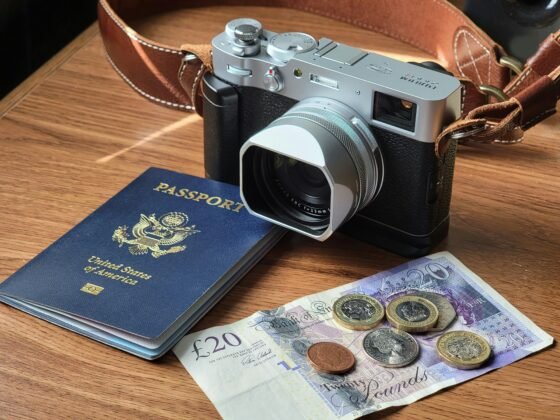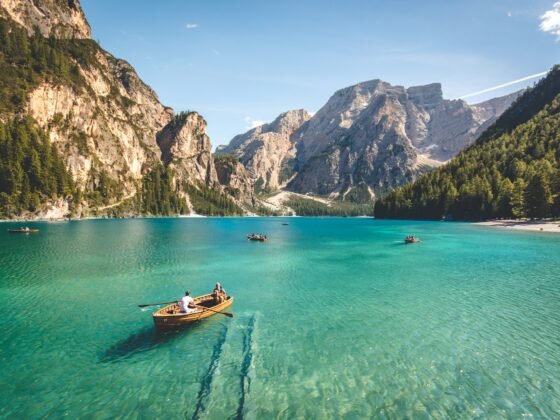Traveling enriches the soul and expands horizons, but the quality of your trip often depends on the contents of your suitcase. With varying destinations come different needs, and understanding how to pack efficiently can make all the difference. From business conferences in bustling cities to tranquil retreats on sandy beaches, each journey requires thoughtful preparation and specific gear. A thoughtful traveler might also bring along meaningful accessories, such as a wolf bracelet, serving as both a stylish piece and a symbol of adventure. This article offers tailored advice for packing effectively, ensuring that every traveler is well-equipped for any adventure.
Universal Packing Essentials
Packing for any trip begins with the basics: clothing, personal care items, and essential electronics. Versatile clothing that can layer easily adapts to changing climates and activities. Always include a mix of lightweight and insulating materials, ensuring you’re prepared for unexpected weather changes. Toiletries should be travel-sized to save space and meet airline regulations, and don’t forget adapters for electronics and chargers, essential for keeping devices powered. A first aid kit, a small flashlight, and extra batteries are also must-haves, as they come in handy in unexpected situations.
Organizing your luggage with space-saving techniques can drastically improve your travel experience. Packing cubes are a game-changer, allowing you to compartmentalize different items and find things easily without disrupting the order of your suitcase. Similarly, rolling clothes rather than folding them can save space and reduce wrinkling. For those prone to overpacking, listing items before starting to pack can help identify what is truly necessary and prevent bringing too many unnecessary items. To further refine your packing approach, especially when considering upgrades to your travel gear, it’s wise to seek expert advice.
To make informed decisions about purchasing travel gear, one innovative resource is Seek & Score. This platform offers insightful reviews and comparisons on the latest travel gear, helping you choose luggage and travel accessories that suit your specific needs. Before investing in new items or upgrading your travel wardrobe, reviewing their expert opinions can be invaluable. This can ensure that every piece you bring enhances your travel experience, combining functionality with style.
Business Travel Precision
When traveling for business, the key is to pack smart, not heavy. Select clothing that is versatile and professional—think wrinkle-resistant fabrics that will look good straight out of the suitcase. Packing two or three neutral-colored suits or dresses that can be mixed and matched with different shirts or accessories can minimize luggage while maximizing outfit choices. Shoes should be comfortable yet suitable for meetings and potentially long days on your feet.
Technology is a critical component of the modern business traveler’s arsenal. A lightweight laptop, a portable charger, and a few USB drives will ensure that you are as productive on the road as you are in the office. It’s also helpful to bring a small, portable Wi-Fi router to ensure you always have a secure connection. These tools can make any café or hotel room a temporary office, complete with all the comforts of a corporate environment.
To optimize your packing space, focus on dual-purpose items that serve both professional and personal needs. A stylish scarf or a sleek blazer can transition from day to evening wear. For staying organized, a good-quality organizer that holds all your tech gear neatly is indispensable. This not only speeds up your packing process but also keeps everything easily accessible and in excellent condition.
Adventure Gear Guide
Packing for adventure travel requires a focus on utility and durability. Your clothing should be suitable for the environment—moisture-wicking fabrics for humid climates and thermal layers for colder areas. A dependable pair of hiking boots, a waterproof jacket, and specialized gear such as binoculars or a high-quality compass are essential for outdoor activities. Consider the length of your trip and the availability of laundry facilities when choosing how much to bring.
Safety cannot be compromised when venturing into less-traveled territories. Include a comprehensive medical kit, a reliable multi-tool, and emergency supplies like water purification tablets and a thermal blanket. A durable, water-resistant backpack is ideal for carrying these items while keeping them easily accessible. GPS devices and maps should be included, especially in areas where digital signals might be unreliable.
Minimizing environmental impact is crucial in adventure travel. Opt for eco-friendly products like biodegradable soap and reusable water containers. Lightweight, compact gear that reduces your luggage weight without sacrificing functionality is best. Planning your pack with sustainability in mind not only eases your travel but also helps preserve the natural beauty of the destinations you visit.
Family Travel Made Simple
Traveling with family means packing for various needs and emergencies. Snacks, entertainment like tablets loaded with movies and games, and comfort items like favorite blankets or toys help keep children happy and calm. Pack clothes that are easy to clean and quick-drying, ideal for younger travelers prone to messes. Diapers, wipes, and a foldable travel crib are essential for infants. If your trip includes active play or sports, don’t forget to pack basketball shoes for kids, which provide proper support and can double as durable everyday footwear.
Accommodating the needs of every family member can be challenging but planning ahead simplifies the process. Consider each person’s essentials, from medications to dietary needs, and pack accordingly. A larger, shared toiletry bag can hold everyone’s hygiene products, saving space and keeping essentials centralized. If traveling by car, include pillows and blankets to make the journey more comfortable for everyone, and ensure there’s a well-stocked emergency kit accessible in the vehicle.
Clothing should be versatile and suitable for the planned activities, ensuring that everyone is comfortable regardless of the weather or the setting. Layering options are particularly valuable as they can accommodate temperature changes throughout the day. Additionally, each family member should have a small daypack for personal items to carry during outings. This not only distributes the load but also allows kids to take responsibility for their belongings.
For accommodations, consider booking family-friendly hotels or vacation rentals that cater to young travelers. Amenities such as pools, playgrounds, and kid-friendly meal options can make a significant difference in the enjoyment of your trip. Pre-booking some activities that cater to different age groups can also keep the entire family engaged and excited about the journey.
Coastal Getaway Necessities
Packing for a coastal vacation means preparing for sun, sand, and sea. Swimwear is a must, along with multiple cover-ups that can transition from the beach to a casual restaurant. Sun protection is critical; include broad-spectrum sunscreen, lip balm with SPF, sunglasses, and broad-brimmed womens lifeguard hats to shield from harmful UV rays. Sandals should be comfortable for walking long distances, water-resistant, and easy to clean.
Beyond the basics, your beach bag should include water-resistant pouches to protect your electronics and other valuables from sand and water. Lightweight beach chairs and a durable umbrella contribute to a comfortable beach experience. For those who enjoy snorkeling or other water sports, consider packing your gear if you prefer not to rent or if you’re visiting a remote area where rentals aren’t available.
Evenings by the coast can be chilly or require a more formal dress code for dining out. Lightweight sweaters or wraps are perfect for cooler nights. Pack a versatile summer dress or a button-down shirt that pairs well with the casual atmosphere but still feels dressy enough for a nice dinner. Breathable fabrics that resist wrinkling are ideal for maintaining a polished look.
Immersive Cultural Experiences
When your travels take you to places rich in culture and history, it’s important to pack with respect and awareness. Researching local customs and expected dress codes is crucial; some cultures require modest clothing, especially when visiting religious sites. Items like scarves, long skirts, and sleeved tops can be stylish while adhering to local norms. Lightweight fabrics are preferable as they can keep you cool and cover skin without being burdensome.
Documenting your experiences is part of the joy of travel. A high-quality camera or a smartphone with a good camera is essential. Extra memory cards and a portable battery pack ensure that you never miss a photo opportunity. For those who appreciate slower travel, a journal or sketchbook allows for reflective downtime and a creative outlet to capture the nuances of your journey.
Local interaction enriches travel experiences, so pack small gifts from your home country as a gesture of goodwill when meeting locals or service providers. Learning a few phrases in the local language can also greatly enhance your interactions. Pack a small language guide or download a translation app to facilitate communication. These small efforts show respect and can lead to more authentic and rewarding experiences.
Sustainable Packing for Eco-Conscious Travelers
The conscientious traveler considers the impact of their journey on the planet. Packing light is fundamental; it not only saves on fuel emissions due to lighter luggage but also makes traveling easier and more flexible. Sustainable products such as reusable water bottles, solar chargers, and eco-friendly toiletries reduce your environmental footprint and often save money in the long run.
Choosing products from companies that enforce fair trade and eco-friendly practices can contribute to sustainable tourism. Items like biodegradable soap, shampoo bars, and bamboo toothbrushes are small switches that make a big difference. Also, packing a reusable shopping bag for purchases or groceries during your trip avoids the need for single-use plastics.
Supporting local economies is also part of sustainable travel. Consider packing less and planning to buy locally made products as souvenirs or additional necessities. This not only lightens your suitcase but also provides economic support to the communities you visit, creating a more balanced interaction between being a tourist and a temporary local.
The Art of Smart Packing
Smart packing goes beyond simply choosing what to bring—it’s about making strategic decisions that enhance your travel experience. Whether you’re a frequent flyer or a seasonal vacationer, developing good packing habits is essential. Review your previous packing choices and adjust based on what you used and what you didn’t. Each trip is an opportunity to refine your approach.
Organizing your packing list by category is another effective strategy. Dividing items into groups such as clothing, electronics, toiletries, and entertainment can help you check off essentials without forgetting anything. Furthermore, reviewing and possibly revising your list based on the specific type of trip can prevent overpacking. A well-considered packing strategy pays dividends in comfort and mobility during your travels.
Lastly, remember to leave space for the unexpected, both in your suitcase and your itinerary. Whether it’s shopping for local attire or picking up unique souvenirs, having a little extra room in your luggage is a wise decision. Similarly, allow some flexibility in your schedule for spontaneous adventures that become memorable highlights of your trip. Packing smart is not just about bringing what you think you’ll need; it’s also about preparing for the unexpected joys of travel.
Image: Unsplash, Anete Lusina












